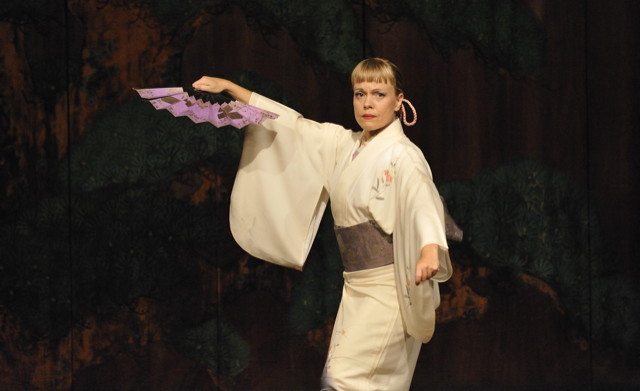
 Do you know how the sun goddess Amaterasu emerged from her cave, bringing light back to the world after hiding herself away? How Japanese traditional dancers learn both the masculine and feminine aspects of dance? Or the role of dance during historical periods such as the shogun era and the post-WWII era?
Do you know how the sun goddess Amaterasu emerged from her cave, bringing light back to the world after hiding herself away? How Japanese traditional dancers learn both the masculine and feminine aspects of dance? Or the role of dance during historical periods such as the shogun era and the post-WWII era?
East meets West in Ami Skånberg Dahlstedt's Swedish-Japanese documentary The Dance of the Sun. The film gives an insight into Japan's special relationship with dance from ancient times to the present.
Dahlstedt studies with her teacher, Nishikawa Sensei, in Kyoto. The two share a reciprocal relationship as students and sensei often do: before each lesson, the student asks to be taught and the sensei accepts teaching the student. The establishment of this lifelong relationship sets the tone for the film: the audience indirectly asks to be taught Japanese cultural aspects of dance, and the film responds.
The pace of The Dance of the Sun is steady. Many of the dancers move slowly, faces posed, movements precise. There is a connection between the dancer and their bodies, their bodies and the earth, and the dancer's awareness of the people.
Overall, The Dance of the Sun teaches and enlightens. Dahlstedt's status as a foreigner gives the audience comfort to go on the journey with her to grow, learn, and reflect.
The 43rd Dance on Camera festival, co-produced by the Film Society of Lincoln Center and Dance Films Association, will be held January 30 through February 3, 2015. The dance-centric film festival will include narrative, documentary, and experimental features and shorts, including several U.S. and New York premieres. The Dance of the Sun will have its New York premiere on Monday, February 2 at 3:30pm.